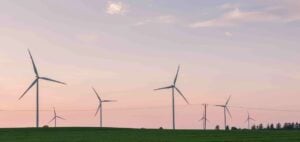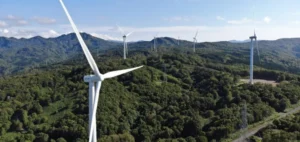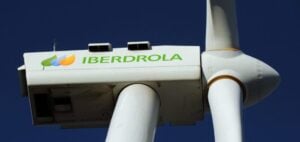In the far north of Colombia, the construction of wind turbines is causing confusion and concern among the indigenous Wayuu communities of this semi-desert region, the new Eldorado of renewable energy.
In 2016, the Portuguese company EDPR and the Italian company ENEL asked the Jusayu family for permission to build a wind farm and an access road to another wind farm in their small territory in this department of La Guajira. The Jusayu family, goat breeders, refuses, prompting a campaign of harassment that will result in one death, several injuries and 34 displaced persons, they accuse.
Two wind farms have so far been built on this windy, oven-hot semi-desert peninsula on the Caribbean coast, where electricity and drinking water are scarce. Because within the framework of a vast plan of energy transition, where the solar and wind energy would represent 8 % of the national supply, the government of the president Gustavo Petro ambition is to make of La Guajira a “world capital of the green energy”.
Although wind power currently accounts for only 0.1% of production, far behind hydroelectric (68.3%) and thermal (30.7%), 57 wind farms, or about 3,000 wind turbines, are to be built over the next ten years in Colombia. An investment of more than 15 billion dollars.
Pressure and “tragedy
Bordering Venezuela, La Guajira is the ancestral territory of the indigenous Wayuu people, nearly 600 of whose communities will be impacted by future wind turbines, according to Indepaz projections. For the think tank, there is no doubt that the Wayuu people are giving up their territory on the basis of “deception” and “irregular” agreements. In a country powered mostly by hydroelectric dams, wind power will be exported and “Guajira will not see a single kilowatt that it produces,” alarms Joanna Barney, a researcher at Indepaz.
The patriarch of the Jusayu family, Moisés, recounts in a criminal complaint against ENEL and ERPD how on February 18, 2018 he was the victim of a machete attack, in his village, at the Windpeshi park construction site. According to his daughter Elba, the pressure exerted by the companies to obtain the permits is responsible for a family “tragedy” with the appearance of telenovelas.
Both companies would have offered “riches” to Moisés’ younger brother to try to convince him. The rivalry degenerated into intra-family violence: a nephew of the family was killed, Moisés had to flee his home with his family. Upon his return, his younger brother had supplanted him as the native authority, authorizing the construction work.
The family has since returned to Wimpedshi and started a new operation. But the threats continued, with one of the sons even claiming to have been shot at by assailants “wearing ENEL Green Power uniforms”. Consulted by the AFP, ENEL affirms that “in no case workers of the company have attempted the life of a member of the Wayuu community” and that the land of the Jusayu “is not part of the zone of direct influence” of the park of Windpeshi. EDPR did not respond to AFP.
“Lack of guidance”
In one of the two wind farms in La Guajira, operated since the beginning of 2022 by ISAGEN, a subsidiary of the Canadian company Brookfield, 14 wind turbines cut the desert wind. A few meters away, most of the Wayuu houses have no electricity. “We wake up looking at our new neighbors. It’s strange because we always grew up surrounded by vegetation,” says Luis Iguaran, a teacher in Lanshalia, the only neighboring community with electricity. “The animals can no longer graze,” he laments, with Indepaz recording a 50% decrease in the goat population during the first five months of operation.
Before erecting the turbines, the company conducted “prior consultation” with local communities and agreed to fund “productive projects” in exchange for 30 years of land use, Barney says. The one in Lanshalia has solar panels and 20,000 liters of drinking water per month. A quantity nevertheless “insufficient” for ten families, according to Mr. Iguaran.
The company tells AFP that it has respected the terms of the consultation, approved by the local environmental authority. But the professor regrets having “lacked advice” that would have allowed him to negotiate “better conditions”. “On paper, they seem generous: ENEL is offering 1 billion (Colombian pesos) a year,” or $220,000. “But there are 19 communities and each one can count between 40 and 80 people,” she laments, which is at least 55,000 pesos per month ($12) per person.






















